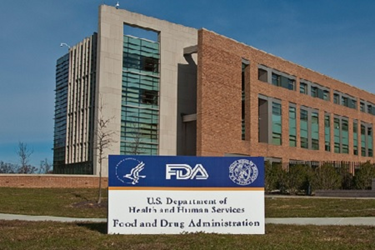Summarizing FDA's New Guidance On Gene Therapy For Hemophilia
By Katie McCarthy, Greenleaf Health

The FDA defines human gene therapy products as all products that mediate their effects by transcription or translation of transferred genetic material or by specifically altering host (human) genetic sequences. Some examples of gene therapy products include nucleic acids, genetically modified microorganisms (e.g., viruses, bacteria, fungi), engineered site-specific nucleases used for human genome editing, and ex vivo genetically modified human cells. Gene therapy products meet the definition of “biological product” in section 351(i) of the Public Health Service (PHS) Act (42 U.S.C. 262(i)) when such products are applicable to the prevention, treatment, or cure of a disease or condition of human beings.
Although the journal Science reports that the first gene therapy clinical trial was conducted in 1990,1 the FDA only approved the first gene therapy product on August 30, 2017. Two more approvals quickly followed, reflecting a suddenly rapid advancement in this field. On July 11, 2018, the FDA issued for public comment six draft guidance documents intended to serve as part of a modern, comprehensive framework for how the Center for Biological Evaluation and Research (CBER) will help advance the field of gene therapy.
This is the final article in a six-part series summarizing each of the draft guidance documents. In previous articles, we reviewed:
- Chemistry, Manufacturing, and Control (CMC) Information for Human Gene Therapy Investigational New Drug Applications (INDs)
- Testing of Retroviral Vector-Based Gene Therapy Products for Replication Competent Retrovirus (RCR) during Product Manufacture and Patient Follow-up
- Long Term Follow-Up After Administration of Human Gene Therapy Products
- Human Gene Therapy for Rare Disease
- Human Gene Therapy for Retinal Disorders
This article will discuss the draft guidance Human Gene Therapy for Hemophilia.
Overview
The draft guidance provides recommendations on the clinical trial design and related development of coagulation factor VIII (hemophilia A) and IX (hemophilia B) activity assays, including how to address discrepancies in factor VIII and factor IX activity assays. The draft guidance includes recommendations regarding preclinical and clinical considerations to support development of human gene therapy (GT) for hemophilia, as well as information on expedited programs and communication with FDA. The draft guidance references other guidances that address clinical development programs more broadly and should be understood as a supplement to those guidances, not a replacement for them.
The FDA encourages sponsors to contact the Office of Tissues and Advanced Therapies (OTAT) in the Center for Biological Evaluation and Research (CBER) before the sponsor’s investigational new drug application (IND) is filed. The draft guidance notes the meeting types that may be used for discussion, including pre-IND meetings and the Initial Targeted Engagement for Regulatory Advice on CBER products (INTERACT), for early, nonbinding regulatory advice.
Considerations For Factor VIII/Factor IX Activity Measurements Assessed By Different Clinical Laboratory Assays
The draft guidance notes that the measurement of clotting factor activity can be challenging, and discrepancies in factor activity measurements between the one stage clotting assay (OC) and chromogenic assay (CS) methods have been observed. Factor activity assay discrepancies are not limited to differences between OC and CS assays, but are also observed between OC assays using different OC reagents. The FDA recommends that sponsors perform analytical studies to clarify the biochemical root causes for any discrepancies observed, addressing:
- Methodology (OC assays vs. CS assays)
- Reagents (phospholipids, activators, chromogenic substrates)
- Conditions (incubation times, temperature)
- Choice of reference standards
- Vendors / kits / lab being used
- Correlations between factor activity and antigen levels (by immunoassay)
The agency advises that data from preclinical studies should inform the selection of assays used in early-phase clinical studies to:
- Measure factor activity intended to be used as a surrogate endpoint to support accelerated approval; and
- Guide exogenous replacement therapy for the treatment of bleeding.
During clinical trials, FDA recommends that sponsors consider:
- Performing a comparative field study with patient plasma samples using assays routinely performed in clinical laboratories to evaluate the range of discrepancies.
- Performing bridging studies on patient samples if changes to the assay(s) are initiated after a clinical trial is underway.
Considerations For Clinical Trials
The agency notes that sponsors should evaluate the discrepancies between OC and CS assays early in clinical development, prior to considering accelerated approval using factor activity levels as a surrogate endpoint.
The FDA provides the following points to consider for late phase clinical trials.
Efficacy Endpoints
Sponsors seeking full approval may consider using the annualized bleeding rate (ABR) as a primary endpoint to demonstrate clinical benefit. For accelerated approval, factor activity may be considered as a surrogate endpoint.
Study Design
The FDA recommends specific pre-and post-administration recommendations to consider while designing the clinical study.
Study Population
To identify the target population, sponsors may choose to exclude patients with pre-existing antibodies to the GT product. Pediatric studies are a critical part of the drug development program, and sponsors must address the additional safeguards for children in clinical investigations.
Statistical Considerations
The FDA recommends a non-inferiority (NI) clinical trial design with ABR as the primary efficacy endpoint using a within-subject comparison design.
Study Monitoring
The draft guidance recommends a short-term monitoring program (first two years following GT product administration) and a long-term monitoring program (≥two years following GT product administration, and up to 15 years for integrating GT products). This section includes more elements to consider in each program.
Patient Experience Data
The FDA encourages sponsors to collect patient experience data during product development, and to submit such data in the marketing application.
The FDA will accept comments on the draft guidance through October 10, 2018. You can submit comments electronically at https://www.regulations.gov/.
References:
- Blaese et al. T Lymphocyte-Directed Gene Therapy for ADA− SCID: Initial Trial Results After 4 Years, Science 20 Oct 1995: Vol. 270, Issue 5235, pp. 475-480 DOI: 10.1126/science.270.5235.475
About The Author:
 Katie McCarthy is VP of regulatory affairs in the Drug and Biological Products group at Greenleaf Health, Inc. She specializes in scientific and regulatory issues affecting pharmaceutical and biotechnology companies. You can reach her at katie.mccarthy@greenleafhealthllc.com.
Katie McCarthy is VP of regulatory affairs in the Drug and Biological Products group at Greenleaf Health, Inc. She specializes in scientific and regulatory issues affecting pharmaceutical and biotechnology companies. You can reach her at katie.mccarthy@greenleafhealthllc.com.
